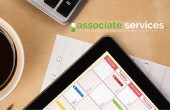A Guide To Tax Changes Impacting Landlords
Article Author: Amanda Swales Posted on: July 10, 2019 (Full Author Bio in the box on the right side) 2718 views
2718 views

One in 10 people now owns a second house. Yet, despite it being a fruitful investment, tax legislation surrounding landlords remains largely unclear. Taxes associated with the buy-to-let property are collectively known as ‘landlord tax’. To make matters more complicated, such legislation is varied and complete, comprehensive advice is scarce.
With that being the case, we thought it would be useful to breakdown the two most discussed components of landlord tax and detail exactly what you need to know.
The dismantling of interest tax relief
If you’re a BTL landlord, one thing you need to get to grips with is interest tax relief. Traditionally, landlords were required to declare rental income but could claim mortgage interest as an expense – drastically reducing their profit from rental income and subsequently their Self Assessment tax bill.
However, this changed for the worse (for landlords at least) in 2017 when it was decided that claiming mortgage interest as a deductible expense would be phased out. For the 2017/18 tax year, you could only claim 75% of your mortgage interest, 50% in 2018/19 and 25% in 2019/20 with the intention to phase it out to 0% for 2020/21 onwards.
This has been replaced with new tax relief for finance costs, which restricts tax relief to 20%. This change has a major impact on landlords that are higher rate taxpayers as it will essentially increase the tax bill of these landlords. Landlords who previously paid tax at the basic rate of 20% could now pay tax at the higher rate (40%).
Fortunately, the likelihood of being bumped up a bracket has been reduced as the government did raise Personal Allowances to £12,500. Subsequently, the higher rate threshold has increased from £46,350 to £50,000.
Therefore, in the interest of keeping HMRC happy and avoid being penalised by incorrectly claiming mortgage interest payments, you must fill in the SA105 section on the Self Assessment tax return.
The burden of Stamp Duty
Stamp Duty Land Tax also needs to be on your radar as a landlord. A tax paid when buying a property in England and Wales, it’s been widely criticised (by both landlords and regular homeowners) as being unnecessary at an already expensive time.
There have also been instances of buyers overpaying. In the 2018-19 tax year alone, nearly £400m was returned to those who had paid too much. Regardless, the legislation is still very much in effect, and for landlords, it is expected they pay more than residential buyers. Specifically, since April 2016 landlords have been expected to pay an additional 3% on Stamp Duty Land Tax.
For example, if the property you’re purchasing is £250,001 - £925,000, regular buyers will be expected to pay 5% in Stamp Duty – landlords, on the other hand, will pay 8%. This is in part due to the increasingly sympathetic approach to first-time buyers and expectation of investors or multiple homeowners to shoulder the tax burden.
However, there are a number of circumstances where you may claim relief (or exemption) from Stamp Duty. If you’re a registered social landlord for instance and a public subsidy funds the sale, you will be eligible. Similarly, if you inherit property through death or divorce, you’ll be exempt.
Other exemptions include but aren’t limited to:
- Payment was not transferred for the property
- You chose to buy a freehold property for less than £40,000
- You chose to buy a new or assigned lease of seven years or more, as long as the premium is less than £40,000 and the annual rent is less than £1,000
For both landlords and residential buyers, the most common misconception in Stamp Duty is when the payment is due. Stamp Duty isn’t paid solely on the purchase - the charge is applied on the majority of transactions relating to the land, grants or assignments of leases – each carrying the 3% extra fee. So, it pays to be aware of any relief you may be eligible for.
About GoSimpleTax
Landlords have never been under so much scrutiny, which is why solutions like GoSimpleTax are necessary when dealing with HMRC. Ensuring all your documents are in the right format, GoSimpleTax software performs all the calculations necessary so you know which bracket you operate in and what your true income tax total is.
If you would be interested in learning how their support can keep the taxman happy, speak to their expert support team today!
Latest Posts
-

Staying HMRC Compliant: VAT Returns Have Chan...
by Amanda Swales on January 29, 2020 Accounting & Tax -

Self Assessment Tax Return 101 - Filling In T...
by Amanda Swales on January 15, 2020 Accounting & Tax -

-



 Top Tax Tips for UK Contractors and Freelancers
Top Tax Tips for UK Contractors and Freelancers  Corporation Tax: Late Payment penalties and interest charges explained
Corporation Tax: Late Payment penalties and interest charges explained  Scotland Vs England And Wales: What Are The Differences In Tax?
Scotland Vs England And Wales: What Are The Differences In Tax?  Top Tax Changes That Contractors Need To Know
Top Tax Changes That Contractors Need To Know  Are You Declaring All Of Your Earnings To HMRC?
Are You Declaring All Of Your Earnings To HMRC?  A Guide To Tax Changes Impacting Landlords
A Guide To Tax Changes Impacting Landlords  Who Needs A UTR Number Anyway?
Who Needs A UTR Number Anyway?  Top 3 Reasons Why Freelancers and Contractors should hire an Accountant
Top 3 Reasons Why Freelancers and Contractors should hire an Accountant  IT Contractors - Profit extraction by dividend payment
IT Contractors - Profit extraction by dividend payment  What is a second payment on account and how is it calculated?
What is a second payment on account and how is it calculated?  PAYE Week 53 payments HMRC
PAYE Week 53 payments HMRC  Choosing the right VAT route
Choosing the right VAT route  Beginners guide to business tax deduction
Beginners guide to business tax deduction  Are you aware about the new HMRC Your 2016 Tax Report Phishing Scam?
Are you aware about the new HMRC Your 2016 Tax Report Phishing Scam?  Cloud Accountancy for Contractors: Do you find it mystifying?
Cloud Accountancy for Contractors: Do you find it mystifying?  Self Assessment Payments on Account
Self Assessment Payments on Account  Staying HMRC Compliant: VAT Returns Have Changed
Staying HMRC Compliant: VAT Returns Have Changed  Do I Need To Register As A Self-Employed Sole Trader?
Do I Need To Register As A Self-Employed Sole Trader?  The top 6 most common mistakes made on Self Assessment Tax Returns
The top 6 most common mistakes made on Self Assessment Tax Returns  Deadline day penalties: a subjective approach
Deadline day penalties: a subjective approach  3 Tips For Handling The Paper Tax Return Submission
3 Tips For Handling The Paper Tax Return Submission  Key tax dates coming up in July
Key tax dates coming up in July  The Tax Investigation Process
The Tax Investigation Process  Should an IT contractor become VAT registered
Should an IT contractor become VAT registered  Review bid gets crucial boost from influential and campaigning politician
Review bid gets crucial boost from influential and campaigning politician  How long to keep your PAYE records
How long to keep your PAYE records  5 reasons to update your self-assessment throughout the year
5 reasons to update your self-assessment throughout the year  How To Make The 2019-20 Tax Year The Time Of Tax Savings As A Sole Trader
How To Make The 2019-20 Tax Year The Time Of Tax Savings As A Sole Trader  HMRC Taskforces Targeting VAT Fraud
HMRC Taskforces Targeting VAT Fraud  Self Assessment Tax Return 101 - Filling In The Form Fast
Self Assessment Tax Return 101 - Filling In The Form Fast 

